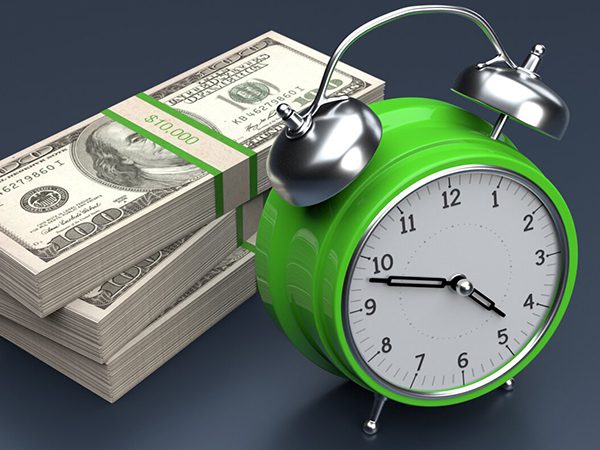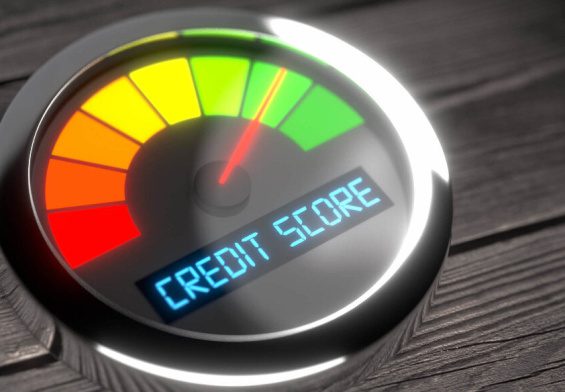
Table of Contents
Intro: Financial Planning for Retirement in Your 30s
Financial Planning for Retirement in Your 30s: It’s not surprising that the prospect of planning for retirement feels remote while you’re in your 30s, but that’s the very best time to begin. Early planning will help set you up for financial freedom later on with more time for your money to grow, taking advantage of the power of compound interest. Yet if you’re in your 30s, here’s how to retire in step, according to a step by step guide of saving strategies and investment options.

1. Plan Early to Understand What Is Important
The sooner you begin planning your retirement, the better the odds of amassing wealth. It’s where the money you invest today can grow significantly over time with the decades you have left until retirement. That’s why compound interest will continue to make your investments generate returns that grow exponentially.
An early start gives you time to take a balanced approach, to attempt to use all your options, with the advantage of a cushion before you are forced to choose.
2. The Retirement Needs Calculator
Know how much money you’ll need when you retire to create an effective retirement plan. What you do want to do is try to shoot for around 70-80 percent of your pre-retirement income each year. As an example, suppose you make $60,000 per year, perhaps you would want around $42,000–$48,000 per year in retirement. But, this estimate can differ based on health costs, healthcare lifestyle and inflation.
To calculate your goal:
Estimate Retirement Age: Determine on when you will retire—65, 70 or earlier.
Project Monthly Expenses: Think of the housing, utilities, food, travel and healthcare costs as essential costs.
Factor in Inflation: To project future costs accurate, use an inflation rate of about 2-3%.
3. Increase your contribution to Employer Sponsored Retirement Accounts.
If your employer has a 401(k), or similar retirement plan, take full advantage. Rule of thumb — many employers will offer to match contributions, which is ‘free money’ to increase your retirement savings.
Here’s how to make the most of it:
Contribute Enough to Get the Full Match: As much as your employer will match, at least contribute 5%.
Increase Contributions Gradually: Create a habit of starting with the minimum and working up from there (by 1-2% per year).
Choose Appropriate Investment Options: The majority of 401(k) plans provide options that range from conservative to aggressive. If your 30s, consider a mix between stocks and bonds that is more growth inclined.
Letting your money work for you instead of the other way around gives you the benefit of dollar cost averaging, albeit not reducing the stability of the markets, but reducing their impact over time.

4. Open an Individual Retirement Account (IRA)
If you don’t have a 401(k) and/or want to save more than your employer can afford, an Individual Retirement (IRA) is a great idea. There are two types of IRAs to consider:
Traditional IRA: Investing here may be tax deductible which means your investments can grow tax deferred until its time to take them.
Roth IRA: You contribute after tax dollars, but withdrawals in retirement are tax free. Be aware that if you are eligible at all, Roth IRA income limits will play a role.
A Roth IRA is especially worth it for young professionals who might be in a lower tax bracket now than you will be in retirement. IRA contribution limits are $6,500, plus an additional $1,000 if you’re 50 or older, in 2023.
5. Imagine a Health Savings Account (HSA)
An HSA is a way to putaway pre-tax dollars for medical expenses if you have a high deductible health plan (HDHP). The HSA offers triple tax benefits: Growth is taxed free and withdrawals for qualified medical expenses are tax-free, and contributions are tax deductible. Once you are over 65, HSA funds can be put to any use allowing this to be a useful addition to your retirement savings.
For example:
Max Out Contributions: Contributions to 2023 IRAs in 2023 are limited to $3,850 per person and $7,750 for families, reduced by the amount of compensation paid by the person whose wages funded a 401(k) Plan in the year.
Invest HSA Funds: If your HSA provider gives you the option to invest in your HSA’s balance, invest some of it into growth assets that will help the account grow faster.
6. Paying Off High Interest Debt Is Where We Should Focus
That same high-interest debt — credit card balances — can be a huge blocker to retirement planning. Now, pay these debts down aggressively because the interest rates on credit cards are often higher than what you’ll make off of your investments. This frees up more ‘play money’ to go towards your retirement savings.
To tackle debt:
Use the Avalanche Method: Paying off debt with highest interest rate first, making minimum amount can be your focus.
Consider Refinancing or Consolidation: Down the road, you can use this money to go toward your retirement accounts instead of high interest debt, thanks to refinancing them at a lower rate.

7. Build an Emergency Fund
Retirement savings protection is best accomplished by having an emergency fund. By putting aside enough money to cover three to six months worth of expenses, you’ll have a safety net in place in the event the unexpected arises and prevent you from pulling too soon out of retirement accounts.
Benefits of an emergency fund:
Avoid Early Withdrawals: Dipping into retirement accounts before you actually ‘retire’ is a subject of taxes and penalties.
Peace of Mind: An emergency fund is money set aside just in case there is a job loss, medical expense or sudden repairs that need to be made to your house.
8. Diversify Your Investments
The reason it helps reduce risk is because they are diversifying your investments from one asset class to another. If you’re in your 30s, you may be in a place to take a little bit more calculated risks by knowing more about your recovery time if there was just another market fluctuation.
Stocks: For long term retirement savings just stocks have the highest growth potential.
Bonds: Bonds provide stability, paired with the volatility of stocks. Balanced mix is something you should consider, the closer you are to retirement.
Real Estate and Other Assets: Beyond what many people still think of their portfolio as, you could also invest in real estate, mutual funds, or ETFs to diversify your portfolio and create a wider possible growth for you.
9. Review and Adjust Your Plan regularly
Your retirement plan is something you revisit as your life circumstances change. Questions about your retirement savings should be asked at least once a year, even of you have just landed a new job, a new income, or new financial goals.
Key adjustments to consider:
Increase Contributions: So, as your income grows, it ideally increases the retirement contributions.
Rebalance Investments: As needed, however, you can adjust your portfolio to remain in balance with your risk tolerance and goals.
But using online calculators and retirement planning tools can help you figure out where you stand in relation to your goals.
10. Retirement Accounts and Tax Benefits Stay Informed
This is especially true if you’re looking at what tax laws and what retirement account options there are at that time and then making a plan based upon that. Contribution limits to retirement accounts may rise, or there may be new savings incentives available.
Resources to consider:
Consult Financial News: If there are changes to the rules around retirement savings, something such as IRS or a reputable finance blog is a good place to keep up to date.
Meet with a Financial Advisor: Retirement planning is based on your needs and stage of life and a certified financial planner can adjust your plan as needed and effectively prepare you for the future.
Final Thoughts: Financial Planning for Retirement in Your 30s
Building a foundation for a secure future means planning financial retirement in your 30s. If you can get started early, invest wisely, and take advantage of the benefit of compound interest, then it’s very likely that you’ll have a nice retirement. The trick (and it makes sense?) is consistency: Any decision you make is a small, smart one: Create a financial cushion for your later years by making such decisions now.
FAQs on Financial Planning for Retirement in Your 30s:
- Why should I start planning for retirement in my 30s?
Starting early allows you to maximize compound interest, giving your savings more time to grow. - How much should I save for retirement each year in my 30s?
A common rule of thumb is to save 15% of your annual income, but more or less may be needed depending on your goals. - What is the benefit of compound interest in retirement planning?
Compound interest means your earnings generate their own earnings, helping your money grow faster over time. - What is a 401(k), and how does it help with retirement?
A 401(k) is an employer-sponsored retirement plan that lets you save pre-tax dollars, often with matching contributions. - Should I take full advantage of my employer’s 401(k) match?
Yes, contributing enough to receive the full match is recommended, as it’s essentially free money for your retirement. - What’s the difference between a Traditional IRA and a Roth IRA?
Traditional IRAs offer tax-deferred growth, while Roth IRAs are funded with after-tax dollars but offer tax-free withdrawals in retirement. - Can I contribute to both a 401(k) and an IRA?
Yes, you can contribute to both, although each has individual contribution limits and income restrictions. - How much should I have saved by the time I’m 40?
Financial experts often recommend having at least two times your annual income saved by age 40. - What is a target-date fund, and is it a good option for retirement?
Target-date funds automatically adjust your asset allocation as you near retirement, making them a good option for hands-off investors. - Is it possible to start saving for retirement in my 30s if I haven’t started yet?
Yes, it’s never too late to start. Begin by maximizing your contributions and sticking to a savings plan. - What is an HSA, and how can it help with retirement?
A Health Savings Account (HSA) is a tax-advantaged account for medical expenses that can also serve as a supplementary retirement fund. - Should I focus on paying off debt or saving for retirement in my 30s?
It depends. High-interest debt should be prioritized, but also try to save for retirement if possible. - How can I estimate how much I’ll need for retirement?
Use a retirement calculator to estimate based on income, lifestyle, and desired retirement age, aiming for 70-80% of pre-retirement income annually. - What is the difference between tax-deferred and tax-free retirement accounts?
Tax-deferred accounts (like Traditional IRAs) delay taxes until withdrawal, while tax-free accounts (like Roth IRAs) tax contributions but offer tax-free withdrawals. - How do I set retirement goals in my 30s?
Define your retirement age, desired lifestyle, and projected expenses, and use these to determine savings targets. - How can I increase my retirement savings contributions over time?
Automate annual increases to your retirement contributions as your income grows. - Is it worth getting professional help with retirement planning in my 30s?
Yes, a financial advisor can offer personalized guidance and help optimize your retirement strategy. - How can I diversify my retirement investments?
Consider a mix of stocks, bonds, and alternative assets to reduce risk and increase growth potential. - What is dollar-cost averaging, and how can it benefit my retirement plan?
Dollar-cost averaging involves consistently investing a fixed amount, which helps minimize the impact of market fluctuations. - How often should I review my retirement plan?
Review your plan at least annually or when major life changes occur to ensure you stay on track. - What happens if I withdraw from my retirement accounts early?
Early withdrawals typically incur taxes and penalties, which can significantly reduce your retirement savings. - Should I include Social Security in my retirement plan?
While it’s good to account for it, rely on personal savings and investments as the foundation of your retirement plan. - What’s the difference between a defined benefit and a defined contribution plan?
A defined benefit plan (like a pension) provides guaranteed income, while a defined contribution plan (like a 401(k)) is based on your contributions and investment growth. - Is it better to invest aggressively or conservatively in my 30s?
In your 30s, an aggressive approach can be beneficial due to the long time horizon, but tailor it to your risk tolerance. - What impact does inflation have on retirement planning?
Inflation erodes purchasing power, so it’s essential to factor it into retirement goals and invest in assets that typically outpace inflation. - Should I consider real estate as part of my retirement plan?
Yes, real estate can provide passive income and diversification, but weigh the risks and your ability to manage it. - Can life insurance be part of a retirement plan?
Certain life insurance policies have cash value components that can be used in retirement, but weigh costs and benefits carefully. - How can I protect my retirement savings from market volatility?
Diversifying and having a mix of stocks, bonds, and other assets can help manage risk during market downturns. - What is the role of annuities in retirement planning?
Annuities offer guaranteed income and may be suitable for risk-averse individuals, though fees and restrictions vary. - How can I stay disciplined with retirement savings throughout my 30s?
Set automated contributions, regularly review progress, and adjust based on life changes to stay on track with retirement goals.
Also visit:-



